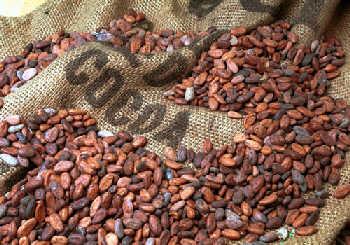Basic knowledge of coffee roasting coffee roasting methods and principles [Figure]

Roast raw coffee beans to give them a distinctive color, aroma and taste. The most important thing about roasting is that it can evenly fry the inside and outside of the beans without burning them. 80% of coffee taste depends on roasting, which is the most important and basic condition for brewing good coffee. The most important thing is to be able to fry the inside and outside of the beans evenly. First of all, the water in the beans will be smoothly discharged through the fire. If this step is too hasty, it will have spots and taste astringent. 80% of coffee taste depends on frying, so frying is an important process to brew good coffee. If the frying technique is good, the beans will be large and swollen, the surface will not be wrinkled, and the light will be evenly weighed, each with its different flavor. The ultimate goal of frying coffee beans is to fry them to their maximum characteristics.● Classification and stages of frying Coffee beans can be roughly divided into three categories: light fire, medium fire and strong fire, and these three types of roasting can be subdivided into eight stages, as shown in the table.
The cooking stage characterizes the preferences of each country. Three stages
Light The lightest frying, no fragrance and no concentration
Cinnamon is a common fried degree, leaving a strong sour taste. Cinnamon beans are a favorite color in the American West.
Medial medium fry. Aromatic, sour and delicious mainly used in blended coffee medium
High acidity neutralizes bitterness. Suitable for Blue Mountain and Dynamic Mazaro Coffee for Japanese, Nordic people like medium (slightly dark)
City Bitterness is strong, suitable for Colombia and Brazil Coffee is popular with New Yorkers Medium (dark)

Full city is perfect for iced coffee. Non-sour, bitter mainly used for iced coffee, but also for Central and South Americans to drink a slight depth

French Strong bitter, French roast with a blackish hue. Depth of coffee brewed in a steam press (French)

Italian black, oily surface, Italian roasting Italian steam pressure coffee weight depth (Italian style)(this article is reproduced)
Important Notice :
前街咖啡 FrontStreet Coffee has moved to new addredd:
FrontStreet Coffee Address: 315,Donghua East Road,GuangZhou
Tel:020 38364473
- Prev

Coffee beans roasting process Coffee bitterness comes from processing
In western countries, people drink a cup of coffee every morning. In order to cover up the bitterness of coffee, some milk powder and granulated sugar are often added. Why is coffee bitter? What seems like a simple question has puzzled scientists for decades. Now, scientists have narrowed their search to two chemical molecules. in the American Chemical
- Next

The aroma of coffee is determined by the roasting process and can be subdivided into eight stages according to the degree of frying.
Frying determines the aroma of coffee to fry raw coffee beans, which can show the unique color, taste and aroma of coffee. 80% of the taste of coffee is determined by frying, so the quality of coffee also depends on frying technology. Through frying, we can turn the light green raw coffee beans into the familiar tea-brown coffee beans. If fried well, the coffee beans will have a lot of aroma, sour taste and
Related
- Beginners will see the "Coffee pull flower" guide!
- What is the difference between ice blog purified milk and ordinary milk coffee?
- Why is the Philippines the largest producer of crops in Liberia?
- For coffee extraction, should the fine powder be retained?
- How does extracted espresso fill pressed powder? How much strength does it take to press the powder?
- How to make jasmine cold extract coffee? Is the jasmine + latte good?
- Will this little toy really make the coffee taste better? How does Lily Drip affect coffee extraction?
- Will the action of slapping the filter cup also affect coffee extraction?
- What's the difference between powder-to-water ratio and powder-to-liquid ratio?
- What is the Ethiopian local species? What does it have to do with Heirloom native species?

